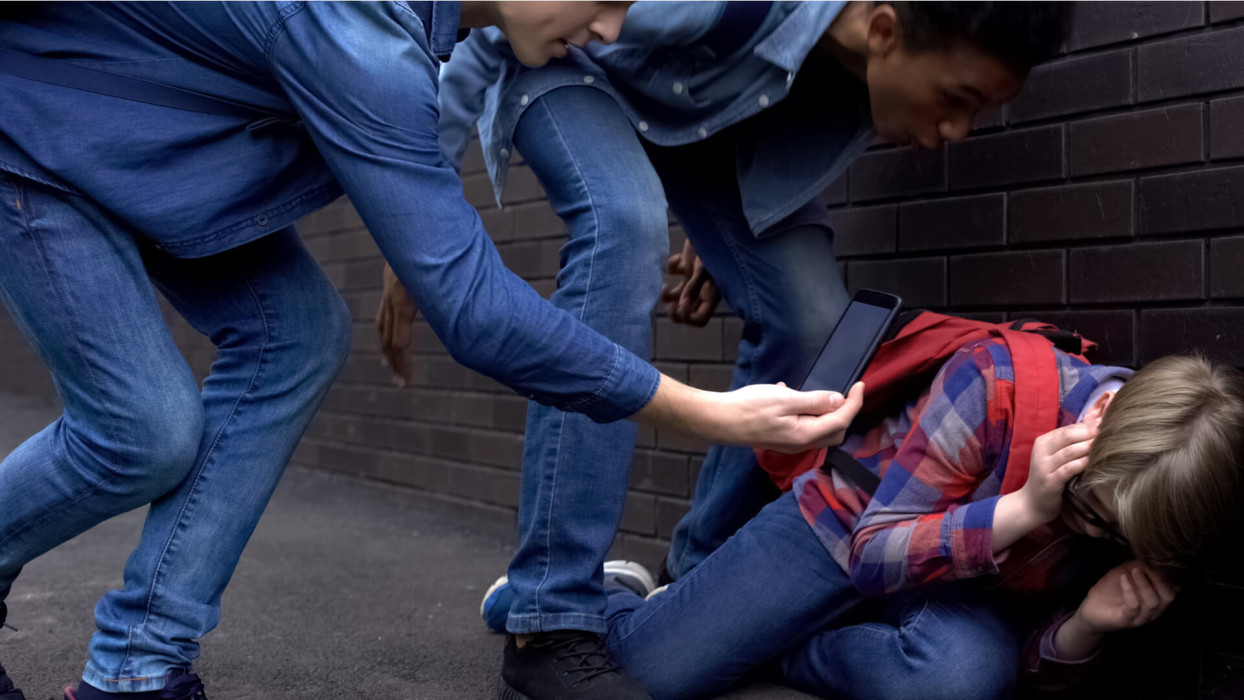Bullying is an ever-present global problem: it happens in schools, offices and even in homes. The issue has been tackled by law enforcement, school officials, governments, and various non-profit organizations alike. With the advent of digital technology, the problem has extended to the online realm, and cyberbullying has become so pervasive that this term even wormed its way into the Concise Oxford English Dictionary.
As today is International Stand Up to Bullying Day, let’s shed some light on the differences between in-person and online abuse and harassment.
Anonymity
In face-to-face bullying, as the name suggests, you are very aware of who your bully is – or bullies are. Even if they slander you behind your back, they usually make a show of it. On the other hand, cyberbullies have an extra advantage: the internet can provide them with the extra layer of anonymity. The bullies hide behind pseudonyms and obviously unreal profile pictures on public message boards or social media, keeping themselves out of
(h)arm’s reach. Since the victims don’t know who their bullies are, it diminishes the chance that the antagonizers will be caught and minimizes their fear of being punished.
A public audience
According to a recent Pew Research study, 59% of US teens have experienced some form of cyberbullying. Unfortunately, the appeal of cyberbullying, besides its anonymity, is ease of access. Bullying someone face-to-face involves the assailant, the victim, and perhaps some bystanders. But, on the internet, bullying can spread like wildfire and it can take many forms, from threatening direct messages to public rumors, and crude photoshop images of the victim. Even worse: more than one bully can join in, setting up a snowball effect on the victim.
Being connected all the time
When it comes to traditional bullying, it’s easier to seek shelter elsewhere, since the act itself depends on physical proximity to the abuser. The same cannot be said about cyberbullying, since you are a target no matter where you are, as long as you are connected … which is rarely avoidable in this digital age. You can go to sleep and wake up to a new slew of threatening messages in your inbox or new rumors circulating about you on the internet. Such incessant bullying may even lead to victims feeling unsafe in the place they should feel safest: their homes.
Detachment
Online bullies tend to be more detached from their actions, and more importantly from the consequences of their actions, since they don’t have face-to-face interactions with their victims. To put it in simple terms: since they can’t see what their actions are doing to the victims, they tend to feel little or no remorse. This has been documented by the online disinhibition effect. In the case of cyberbullying, it is called toxic disinhibition, and it includes inappropriate or even antisocial behavior such as hostile language or threats. People online can behave differently to how they behave in real life, since they lose their inhibitions and believe that there will be no consequences for their actions.
Online is forever
You may be familiar with the saying “What happens in Vegas stays in Vegas”, which implies the privacy of an event. In the case of the web, what goes there stays there, although it is far from private. Anything that goes on the web may be hard to erase entirely. Unfortunately, this also applies to rumors or images that cyber-bullies may post online and for others to see. In these cases, you can ask the service providers to take the posts down. Facebook, Instagram, Twitter, YouTube and and other major services all have dedicated site sections that will help you with that. There are even companies that specialize in hunting down data and then ask the websites to remove the information or at least make it difficult to find.
What to do if you’re a victim of cyberbullying
Bullying in whatever form is a very sensitive topic, which can be very difficult to broach. It affects everyone regardless of age, race, gender or religion. Although it can make you feel isolated, always remember you’re not alone and there are people who care about you, so don’t be afraid to speak up about your problems and seek help.
Also, remember that it’s not your fault and you did nothing that warrants this kind of behavior. Nobody deserves to be bullied under any circumstances, no matter who they are, how they look or what they believe.
Don’t keep it to yourself; talk to someone you trust. It could be your parents, teachers, boss or even healthcare professionals. They are all here to help you and support you.
Keep the evidence of cyberbullying – print it out, screenshot it, save it however you can. It can be emails, blog posts, social media posts or direct messages; just keep a record of them. You will need proof when reporting the behavior. Report the bullying to the respective services hosting the abuse and, if it is happening in a forum, you can flag the comments. If you’re still at school, it’s important to show the posts to your parents.
The following websites offer not only advice, but also contacts for counseling services:
- Stop Bullying (United States)
- National Bullying Helpline (United Kingdom)
- Kids Help Phone (Canada)
- Kids Line (New Zealand)
- Kids Help Line (Australia)
- Cyber B.A.A.P. (India)
- Cybersmile (various countries)
Further resources:
What is cyberbullying and how to defend against it?
Stop Cyberbullying Day: Advice for victims and witnesses
Cyberbullying: What schools and teachers can do
How to spot if your child is a victim of cyberbullying
Bullying resources for educators and parents
To learn more about more dangers faced by children online as well as about how technology can help, head over to the Safer Kids Online platform.





